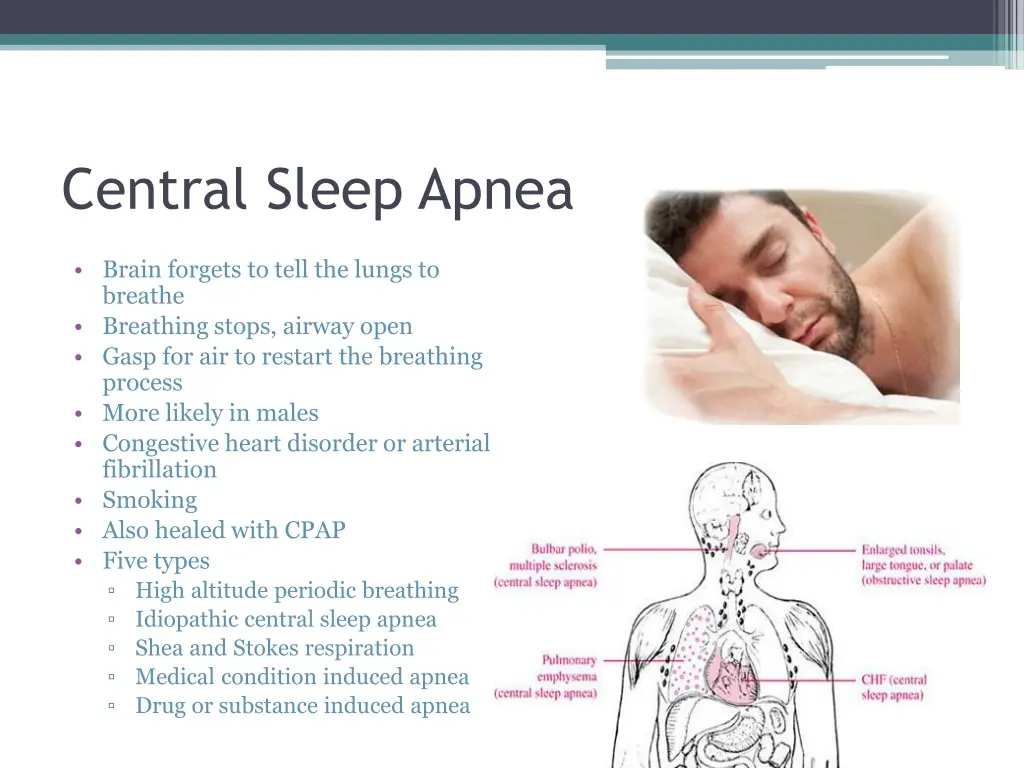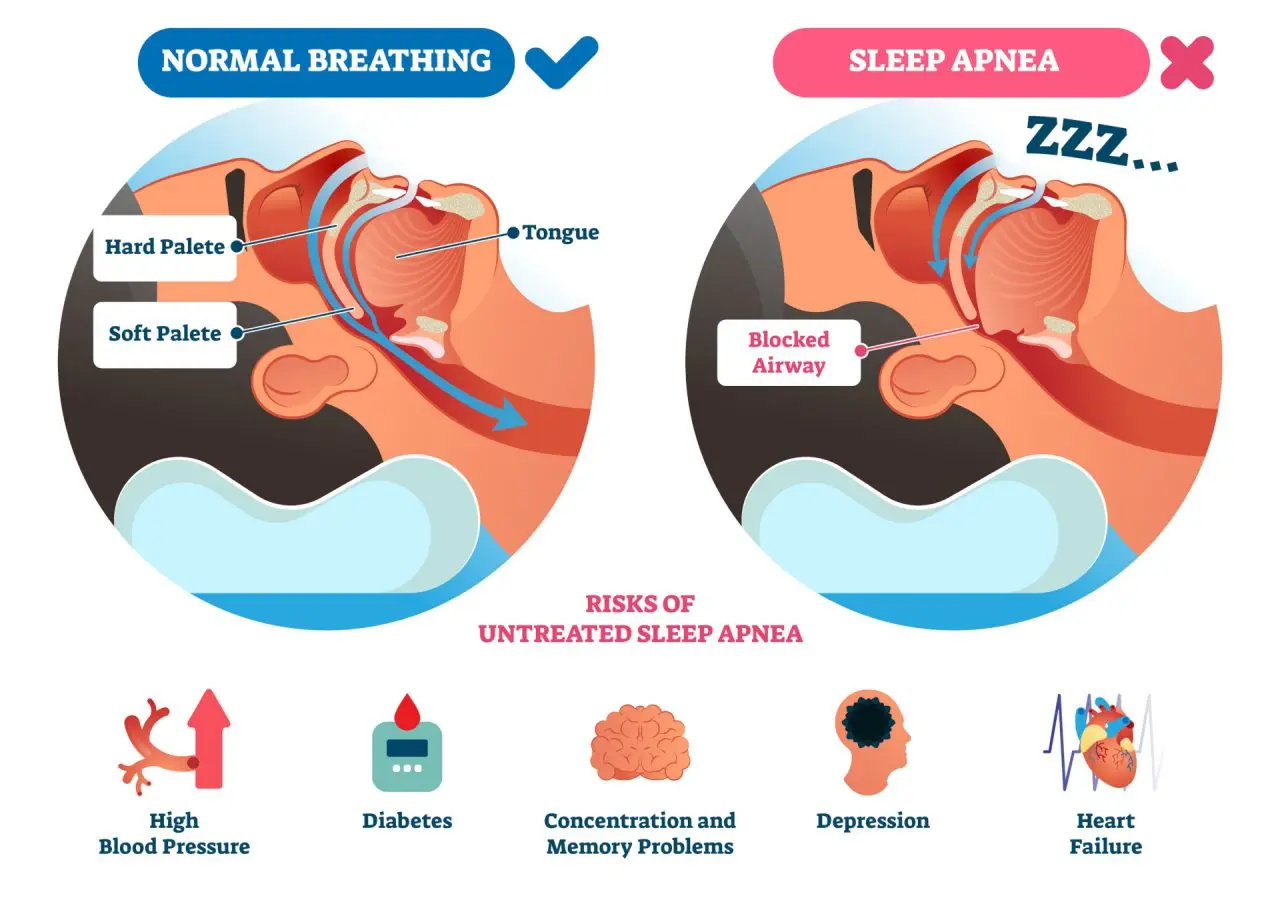Can Central Sleep Apnea be Cured?
Sometimes
Outcomes depend on the underlying cause and response to treatment; management focuses on improving sleep quality and reducing symptoms

What is Central Sleep Apnea?
Central sleep apnea is a sleep disorder characterized by a lack of respiratory effort during sleep, leading to pauses in breathing. It differs from obstructive sleep apnea. Treatment may involve addressing underlying conditions and, in some cases, positive airway pressure therapy.

Clinical Aspects

Characteristics
Sleep disorder characterized by a lack of respiratory effort during sleep, unrelated to an obstruction of the airway

Symptoms
Interrupted breathing during sleep, daytime sleepiness

Diagnosis
Sleep studies, clinical evaluation

Prognosis
Variable; depends on the underlying cause and response to treatment

Complications
Daytime fatigue, complications of untreated apnea
Etiology and Treatment

Causes
Dysfunction in the central nervous system that controls breathing

Treatments
Treatment of underlying causes, positive airway pressure therapy (adaptive servo-ventilation, bilevel positive airway pressure)

Prevention
Treatment of underlying causes, positive airway pressure therapy (adaptive servo-ventilation, bilevel positive airway pressure)
Public Health and Patient Perspectives

Epidemiology
Sleep disorder characterized by pauses in breathing

Patient Perspectives
Management involves addressing underlying causes and improving sleep
This information aims to provide a general understanding of the subject matter, but individual circumstances can vary significantly. Please remember to consult with healthcare professionals for personalized advice and guidance.
Share: